|
 |
 Автор: Williams Автор: Williams
 Дата: 19 июня 2015 Дата: 19 июня 2015
 Просмотров: 1 535 Просмотров: 1 535 |
| |
Edward Isaaks & Mohan Srivastava - Applied Geostatistics
Oxford University Press, 1989
pdf, 587 pages, english
ISBN-13: 978-0195050134
ISBN-10: 0195050134
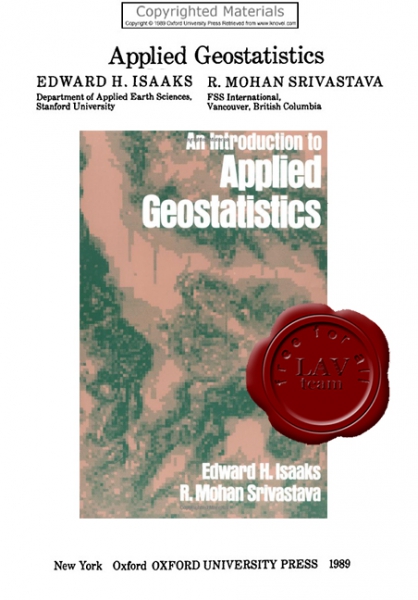
In Applied Geostatistics the authors demonstrate how simple statistical methods can be used to analyse earth science data. In clear language, they explain how various forms of the estimation method called kriging can be employed for specific problems. A case study of a simulated deposit is the focus for the book. This model helps the student develop an understanding of how statistical tools work, serving as a tutorial to guide readers through their first independent geostatistical study. |
| |
 Читать статью дальше (комментариев - 7)
Читать статью дальше (комментариев - 7)
| |
|
 |
 Автор: Williams Автор: Williams
 Дата: 15 января 2015 Дата: 15 января 2015
 Просмотров: 1 144 Просмотров: 1 144 |
| |
Alexander H.D. Cheng -
Multilayered Aquifier Systems: Fundamentals and Applications
(Civil and Environmental Engineering, Book 3)
CRC Press; 2000
pdf, 399 pages, english
ISBN-10: 0824798759
ISBN-13: 978-0824798758
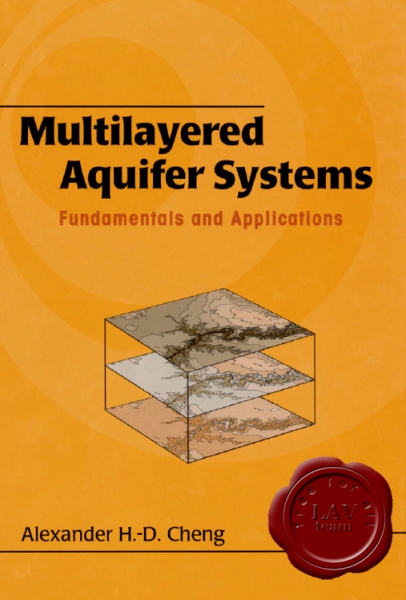
Offers a systematic and unified approach to the classical theories and recent techniques of multilayered aquifer systems. Clarifies governing principles and facilitates industrial problem solving. Uses the automated numerical Laplace inversion procedure to simplify mathematical materials. |
| |
 Читать статью дальше (комментариев - 11)
Читать статью дальше (комментариев - 11)
| |
|
 |
 Автор: Williams Автор: Williams
 Дата: 2 октября 2014 Дата: 2 октября 2014
 Просмотров: 11 328 Просмотров: 11 328 |
| |
Cyndy Davenport, Ishka Voiculescu - Mastering AutoCAD Civil 3D 2015: Autodesk Official Press
pdf + epub + bonus
Wiley, 2014
pdf+epub, 1128 pages, english
ISBN 978-1-118-86209-4
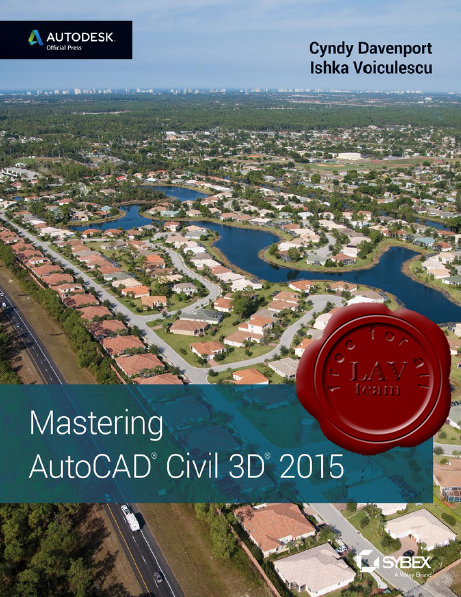
Mastering AutoCAD Civil 3D is the ultimate guide to the new standard in civil engineering software. With combined experience in both civil engineering and Autodesk Civil 3D, authors Cyndy Davenport and Ishka Voiculescu guide you through the ins and outs of the program, from the fundamentals to the little-known tricks that make a big difference. The book focuses on real-world applications in professional environments, and presents topics and ideas not found anywhere else. Lessons begin simply, with an overview of the software and interface, and then gradually progress to more complex topics.
AutoCAD Civil 3D is the standard software for civil engineering and design. From surveying and mapping, to design, to documentation and analysis, the program offers expanded capabilities and complementary workflows, allowing easy integration with InfraWorks, Revit Structure, and more. The ability to complete a project within a single suite means increased productivity and continuity, which translates into quicker turnaround, better-designed structures, and streamlined project management. The savvy civil engineering professional must be well versed in the program's full functionality as it expands throughout government agencies and private companies. This book features in-depth coverage of topics including: surveying, points, and alignments; profiles, corridors, and grading; LandXML and LDT project transfer; visualization, sheets, and project management. |
| |
 Читать статью дальше (комментариев - 22)
Читать статью дальше (комментариев - 22)
| |
|
 |
 Автор: Williams Автор: Williams
 Дата: 21 июля 2014 Дата: 21 июля 2014
 Просмотров: 9 535 Просмотров: 9 535 |
| |
Eric Chappell - AutoCAD Civil 3D 2015 Essentials
CRC Press, 2014
pdf, 402 pages, english
ISBN 978-1-118-87102-7
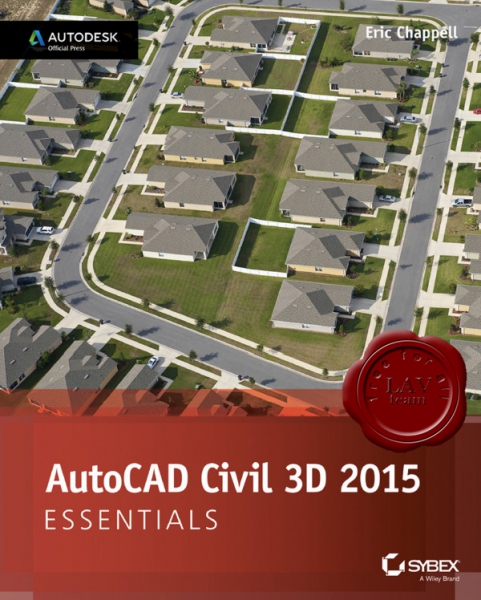
Over 140 experts, 14 countries, and 89 chapters are represented in the second edition of the Bridge Engineering Handbook. This extensive If you need to learn the core features and functions of AutoCAD Civil 3D now, this is the book for you. AutoCAD Civil 3D Essentials uses full-color screenshots and tutorials based on real workflows to teach you the fundamentals of this industry-leading civil engineering software. Award-winning instructor Eric Chappell has been using and teaching Civil 3D since its first release, and his to-the-point explanations of crucial Civil 3D topics mean that you'll learn what you need to know quickly and efficiently. In each chapter, you will progress from guided tutorials to open-ended civil projects, and can download before and after project files to check your work or jump directly to the section of the book you need. AutoCAD Civil 3D Essentials will have you designing, implementing, and documenting civil engineering projects in no time.
As an Autodesk Official Press book, AutoCAD Civil 3D Essentials is approved as a study guide for Civil 3D certification exams. The proven skills-based approach of this guide focuses on enabling you to fully leverage the capabilities of this powerful software. Here are a few of the skills you will learn as you work through this comprehensive book:
- Working with field survey data, point data, and stakeout data.
- Modeling terrain and boundaries using surfaces and parcels.
- Using profiles, alignments, corridors, and quantities.
- Creating construction documentation and project visualizations.
Archive includes all the project files and other bonus content. |
| |
 Читать статью дальше (комментариев - 12)
Читать статью дальше (комментариев - 12)
| |
|
 |
 Автор: Williams Автор: Williams
 Дата: 13 июля 2014 Дата: 13 июля 2014
 Просмотров: 3 239 Просмотров: 3 239 |
| |
Saeid Eslamian - Handbook of Engineering Hydrology:
Fundamentals and Applications; Modeling, Climate Change and Variability; Environmental Hydrologiy and Water
CRC Press, 2014
pdf, 624+634+594 pages, english
ISBN 9781466552418, 9781466552463, 9781466552494
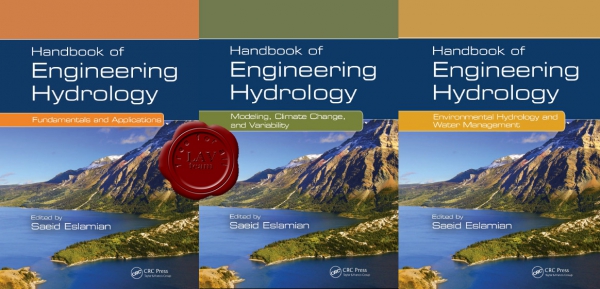
While most books examine only the classical aspects of hydrology, this three-volume set covers multiple aspects of hydrology, and includes contributions from experts from more than 30 countries. It examines new approaches, addresses growing concerns about hydrological and ecological connectivity, and considers the worldwide impact of climate change. It also provides updated material on hydrological science and engineering, discussing recent developments as well as classic approaches. Published in three books, Fundamentals and Applications; Modeling, Climate Change, and Variability; and Environmental Hydrology and Water Management, the entire set consists of 87 chapters, and contains 29 chapters in each book.
The chapters in this book contain information on:
- the anthropocenic aquifer, groundwater vulnerability, and hydraulic fracturing, and environmental problems;
- disinfection of water, environmental engineering for water and sanitation systems, environmental nanotechnology, modeling of wetland systems, nonpoint source and water quality modeling, water pollution control using low-cost natural wastes, and water supply and public health and safety;
- environmental flows, river managed system for flood defense, stormwater modeling and management, tourism and river hydrology, and transboundary river basin management;
- the historical development of wastewater management, sediment pollution, and sustainable wastewater treatment;
- water governance, scarcity, and security;
- the formation of ecological risk on plain reservoirs, modification in hydrological cycle, sustainable development in integrated water resources management, transboundary water resource management, and more.
|
| |
 Читать статью дальше (комментариев - 16)
Читать статью дальше (комментариев - 16)
| |
|
 |
 Автор: Williams Автор: Williams
 Дата: 23 июня 2014 Дата: 23 июня 2014
 Просмотров: 3 021 Просмотров: 3 021 |
| |
Wai-Fah Chen, Lian Duan - Bridge Engineering Handbook, Second Edition:
Fundamentals, Superstructure, Substructure, Seismic Design, Construction and Maintenance
CRC Press, 2014
pdf, 614+734+378+722+644 pages, english
ISBN 9781439852071, 9781439852217, 9781439852194, 9781439852187, 9781439852088
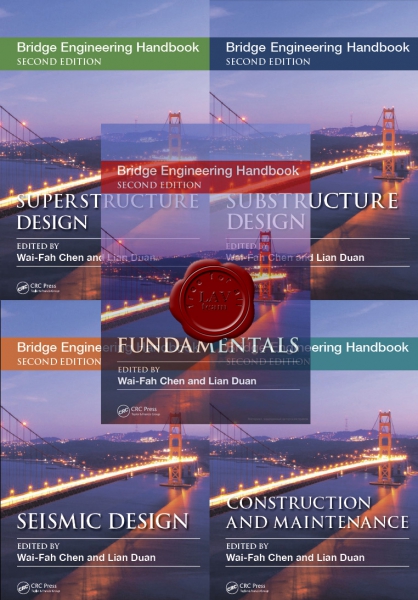
Over 140 experts, 14 countries, and 89 chapters are represented in the second edition of the Bridge Engineering Handbook. This extensive collection highlights bridge engineering specimens from around the world, contains detailed information on bridge engineering, and thoroughly explains the concepts and practical applications surrounding the subject.
Published in five books: Fundamentals, Superstructure Design, Substructure Design, Seismic Design, and Construction and Maintenance, this new edition provides numerous worked-out examples that give readers step-by-step design procedures, includes contributions by leading experts from around the world in their respective areas of bridge engineering, contains 26 completely new chapters, and updates most other chapters. It offers design concepts, specifications, and practice, as well as the various types of bridges. The text includes over 2,500 tables, charts, illustrations, and photos. The book covers new, innovative and traditional methods and practices; explores rehabilitation, retrofit, and maintenance; and examines seismic design and building materials.
The first book, Fundamentals contains 22 chapters, and covers aesthetics, planning, design specifications, structural modeling, fatigue and fracture.
The second book, Superstructure Design, contains 19 chapters, and covers information on how to design all types of bridges.
The third book, Substructure Design, contains 11 chapters addressing the various substructure components.
The fourth book, Seismic Design contains 18 chapters, and covers seismic bridge analysis and design.
The fifth book, Construction and Maintenance contains 19 chapters, and covers the practical issues of bridge structures.
What’s New in the Second Edition:
- Includes two new chapters: Extradosed Bridges and Stress Ribbon Pedestrian Bridges.
- Updates the Prestressed Concrete Girder Bridges chapter and rewrites it as two chapters: Precast/Pretensioned Concrete Girder Bridges and Cast-In-Place Post-Tensioned Prestressed Concrete Girder Bridges.
- Expands the chapter on Bridge Decks and Approach Slabs and divides it into two chapters: Concrete Decks and Approach Slabs.
- Rewrites seven chapters: Segmental Concrete Bridges, Composite Steel I-Girder Bridges, Composite Steel Box Girder Bridges, Arch Bridges, Cable-Stayed Bridges, Orthotropic Steel Decks, and Railings.
This text is an ideal reference for practicing bridge engineers and consultants (design, construction, maintenance), and can also be used as a reference for students in bridge engineering courses. |
| |
 Читать статью дальше (комментариев - 8)
Читать статью дальше (комментариев - 8)
| |
|
 |
 Автор: Williams Автор: Williams
 Дата: 15 июня 2014 Дата: 15 июня 2014
 Просмотров: 1 905 Просмотров: 1 905 |
| |
Wai-Fah Chen, Lian Duan - Bridge Engineering Handbook, Second Edition:
Superstructure, Substructure, Seismic Design, Construction and Maintenance
CRC Press, 2014
pdf, 734+378+722+644 pages, english
ISBN 9781439852217, 9781439852194, 9781439852187, 9781439852088
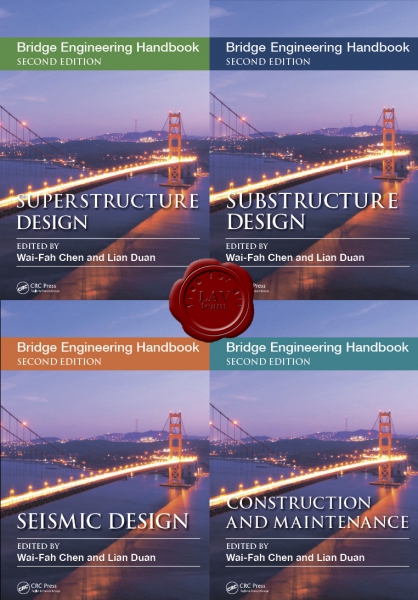
Over 140 experts, 14 countries, and 89 chapters are represented in the second edition of the Bridge Engineering Handbook. This extensive collection highlights bridge engineering specimens from around the world, contains detailed information on bridge engineering, and thoroughly explains the concepts and practical applications surrounding the subject.
Published in five books: Fundamentals, Superstructure Design, Substructure Design, Seismic Design, and Construction and Maintenance, this new edition provides numerous worked-out examples that give readers step-by-step design procedures, includes contributions by leading experts from around the world in their respective areas of bridge engineering, contains 26 completely new chapters, and updates most other chapters. It offers design concepts, specifications, and practice, as well as the various types of bridges. The text includes over 2,500 tables, charts, illustrations, and photos. The book covers new, innovative and traditional methods and practices; explores rehabilitation, retrofit, and maintenance; and examines seismic design and building materials.
The first book (is still absent), Fundamentals contains 22 chapters, and covers aesthetics, planning, design specifications, structural modeling, fatigue and fracture.
The second book, Superstructure Design, contains 19 chapters, and covers information on how to design all types of bridges.
The third book, Substructure Design, contains 11 chapters addressing the various substructure components.
The fourth book, Seismic Design contains 18 chapters, and covers seismic bridge analysis and design.
The fifth book, Construction and Maintenance contains 19 chapters, and covers the practical issues of bridge structures.
What’s New in the Second Edition:
- Includes two new chapters: Extradosed Bridges and Stress Ribbon Pedestrian Bridges.
- Updates the Prestressed Concrete Girder Bridges chapter and rewrites it as two chapters: Precast/Pretensioned Concrete Girder Bridges and Cast-In-Place Post-Tensioned Prestressed Concrete Girder Bridges.
- Expands the chapter on Bridge Decks and Approach Slabs and divides it into two chapters: Concrete Decks and Approach Slabs.
- Rewrites seven chapters: Segmental Concrete Bridges, Composite Steel I-Girder Bridges, Composite Steel Box Girder Bridges, Arch Bridges, Cable-Stayed Bridges, Orthotropic Steel Decks, and Railings.
This text is an ideal reference for practicing bridge engineers and consultants (design, construction, maintenance), and can also be used as a reference for students in bridge engineering courses. |
| |
 Читать статью дальше (комментариев - 15)
Читать статью дальше (комментариев - 15)
| |
|
 |
 Автор: Williams Автор: Williams
 Дата: 10 июня 2014 Дата: 10 июня 2014
 Просмотров: 3 371 Просмотров: 3 371 |
| |
Roy Chudley, Roger Greeno - Building Construction Handbook
10-th edition
Routledge, 2014
pdf, 984 pages, english
ISBN: 0415836387, 9780415836388
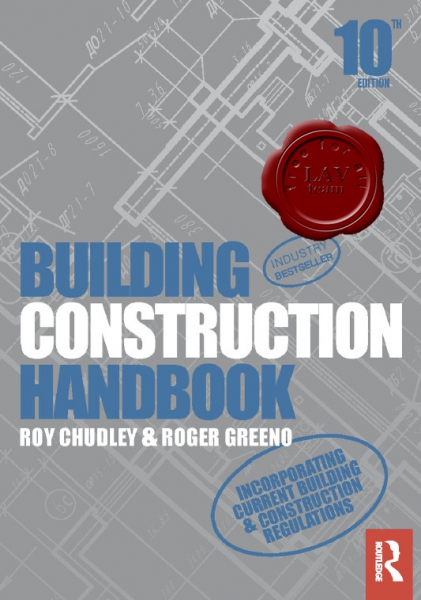
The Building Construction Handbook is THE authoritative reference for all construction students and professionals. Its detailed drawings clearly illustrate the construction of building elements, and have been an invaluable guide for builders since 1988. The principles and processes of construction are explained with the concepts of design included where appropriate. Extensive coverage of building construction practice, techniques, and regulations representing both traditional procedures and modern developments are included to provide the most comprehensive and easy to understand guide to building construction.
This new edition has been updated to reflect recent changes to the building regulations, as well as new material on the latest technologies used in domestic construction.
Building Construction Handbook is the essential, easy-to-use resource for undergraduate and vocational students on a wide range of courses including NVQ and BTEC National, through to Higher National Certificate and Diploma, to Foundation and three-year Degree level. It is also a useful practical reference for building designers, contractors and others engaged in the construction industry. |
| |
 Читать статью дальше (комментариев - 16)
Читать статью дальше (комментариев - 16)
| |
|
 |
| ПОИСК ПО САЙТУ |
 |
|
 |
|